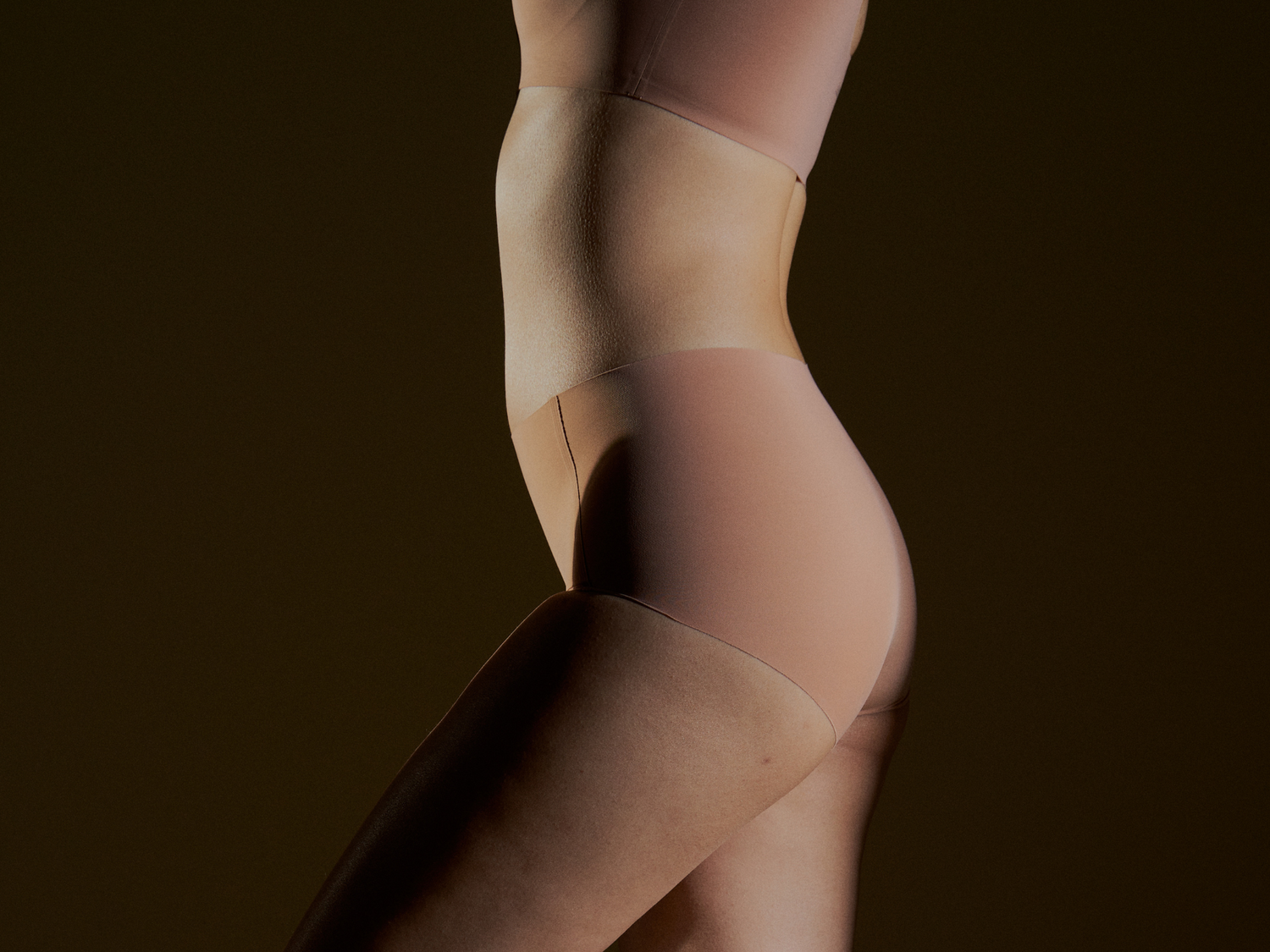When you think of “taboo” words, your mind probably jumps to things that are a little risqué or controversial. But what about the words we don't exactly avoid, yet still make us squirm when they come up? One such word: cellulite.
Even though cellulite is totally normal, it carries a stigma, much like the dreaded "f-word" (read: fat). And where there's stigma, there are wild myths floating around—some so bizarre, you'll wonder how they even got started!
Rest assured! At Curvena, we're all about clearing the air and busting those myths wide open. But of course, just reading about what's true and what's not can be a bit boring (and it's not exactly thrilling to write about either). So why not put yourself to the test? Let's see how much you know about this much-maligned body phenomenon by determining which of these beliefs rings true, and which has no basis!
What is Cellulite?
Obviously, before we put you in the hot seat and shine the interrogation lights on you, let's first equip you with the basics. What exactly is cellulite?
Cellulite is a skin condition where fat deposits push through the connective tissue beneath the skin, creating a dimpled or lumpy appearance, often on the thighs, hips, and buttocks. It is a very common occurrence, that it affects up to 90% of women at some point in their lives.
Rather than being a health concern, cellulite is simply a natural part of many bodies. Its appearance can vary from person to person, influenced by factors like body position and skin thickness. Understanding this helps to demystify the condition and can make it easier to address.
Cellulite 101: How Does It Really Form?
At its core, cellulite forms when fat cells push through the connective tissue beneath the skin. This connective tissue, made up of collagen and elastin, is supposed to keep your skin smooth and firm. When the connective tissue weakens or becomes less elastic, it can no longer contain the fat cells effectively, leading to the lumpy, dimpled appearance we call cellulite.
Now that we've got a handle on what cellulite is, let's discuss some of the most common misconceptions and uncover the truth behind this widely misunderstood condition! Are you ready? Nervous? You might want to be, because some of these myths are so widely accepted as “facts”, that they might just shake up everything you thought you knew about cellulite!
Battle of the Cellulite Myths: Are You In?
-
Only overweight people get cellulite.
FALSE: Think cellulite is exclusive to those carrying extra pounds? Think again! It's a skin deep phenomenon that can affect people of all shapes and sizes. Its presence is more about your skin's structure, genetics, and hormones than just body weight alone.
-
Cellulite is a women's concern.
FALSE: Ladies, you're not alone in the cellulite club! While it's more common in women due to fat distribution and hormonal differences, men can also join the ranks of those with cellulite.
Question! Why is cellulite more commonly known as a women's problem and not men's?
The reason for this gender-biassed misconception is due to the way our connective tissue is structured. Women's connective tissue tends to be arranged in a vertical grid-like pattern, which makes it easier for fat cells to push through and create those dimples. Men, on the other hand, have a crisscross pattern in their connective tissue that helps keep fat cells in check, making cellulite less common among them.
-
Cellulite is caused by genetics.
TRUE: Genetics definitely play a starring role in the cellulite saga, influencing skin structure and fat distribution. But like what was mentioned before, it's not a “one cause, one solution” kinda problem. Hormones, lifestyle, and overall skin health also have their say. So before you go and blame it on your family tree, be mindful of the other factors as well!
-
Drinking more water can get rid of cellulite.
FALSE: Staying hydrated is fantastic for your skin, making it look plumper and more radiant. However, it won't send cellulite packing. While water helps maintain skin health, it doesn't directly banish those dimples.
-
Cellulite is more visible as you age.
TRUE: As time marches on, our skin tends to lose elasticity and can become thinner, making cellulite more noticeable. Hormonal changes also contribute to this gradual process.
-
Cellulite is permanent and cannot be improved.
FALSE: While cellulite may be a persistent companion, its appearance can be improved with treatments like Curvena's CelluFirm-K Anti-Cellulite Treatment. Using advanced 3-in-1 anti-cellulite technology from South Korea, our No. 1 cellution targets cellulite by supporting muscle growth and breaking down fat cells. This leads to enhanced muscle tone in areas like the thighs, stomach, waist, and bum, as well as improved metabolism and smoother skin. While results vary, and those stubborn dimples might not completely vanish after just one session, consistent treatments paired with a healthy lifestyle can deliver significant, visible improvements.
Wrapping It Up: What We've Learned About Cellulite
So, did you learn a lot? Did you get a lot of them correct? If you did—great job! If not—also great job! It means you've absorbed some valuable insights from this read.
Remember, cellulite is a natural and common part of many bodies. It doesn't define our worth or health. While treatments and lifestyle changes can enhance its appearance, striving for perfection is not the goal. Embrace a balanced approach, appreciate the natural variations in our bodies, and celebrate the unique beauty that comes with it.
